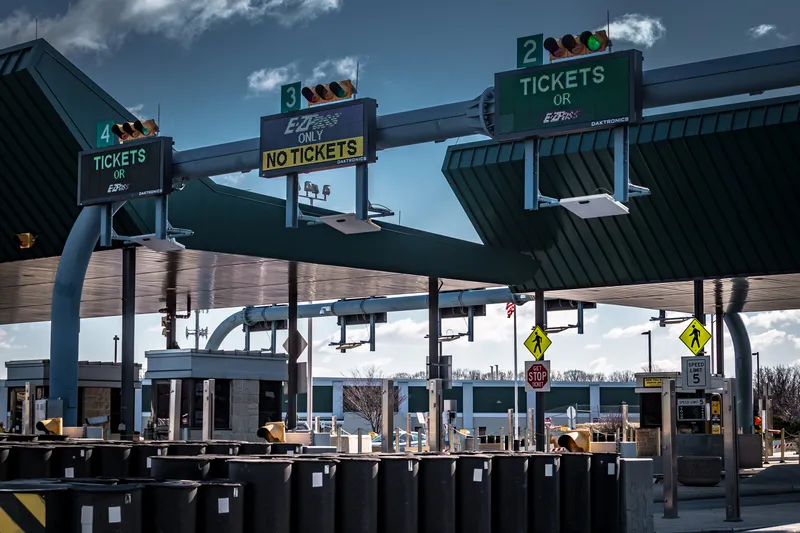Nearly a year after the I-95 Corridor Coalition, the University of Maryland (UMD) and Inrix announced a three-year expansion of the Vehicle Probe Project (VPP), the coalition and its partners are expanding their collaboration once again. Through a Federal Highway Administration (FHWA) Awards Grant, the coalition will use Inrix traffic information to expand coverage to over 40,000 miles of roads across fourteen states.
October 12, 2012
Read time: 3 mins
Nearly a year after the I-95 Corridor Coalition, the University of Maryland (UMD) and 163 Inrix announced a three-year expansion of the Vehicle Probe Project (VPP), the coalition and its partners are expanding their collaboration once again.
Through a831 Federal Highway Administration (FHWA) Awards Grant, the coalition will use Inrix traffic information to expand coverage to over 40,000 miles of roads across fourteen states, to provide:
The VPP expansion is funded from a US$3.2 million grant from the FHWA, competitively awarded under FHWA’s Multistate Corridor Operations and Management Program. First operational in 2008, with 1,500 miles of coverage in six states, the VPP now covers nearly 8,000 miles of freeways and 32,000 additional miles of state highways and arterials in fourteen states. The VPP uses crowd-sourced traffic data and advanced analytics techniques to turn billions of data points into insights that are transforming the manner in which member states build, manage and measure their road networks. Real-time speeds and travel times are provided for 65,000 road segments over the 40,000 centerline miles, updated every minute.
Since it was first implemented in 2008, the VPP has achieved 99.8 per cent data availability in support of dozens of traffic and incident management, traveler information and performance measurement/planning uses by the coalition. In the largest ongoing test of traffic data accuracy in the world, INRIX real-time traffic information has been found accurate within 2.5 mph on average over the last four years.
“Better information means improved operations, more precise planning and better performance measurement,” added Rick Schuman, Vice President/General Manager of Public Sector, Inrix. “We look forward to continued collaboration with the coalition and its member agencies to better serve the travelling public.”
Added Schoener, “Through the vehicle probe project, states are meeting the federal government’s requirements for tomorrow’s transportation systems now. It exemplifies what successful public partnerships and public-private partnerships are all about - results.”
Through a
- Real-time traffic information for nearly 300 miles of freeways in Maine, New Hampshire, Massachusetts, and Connecticut
- Maryland, Rhode Island and the District of Columbia join North Carolina, South Carolina and Virginia with complete real-time coverage of freeways and select arterials state-wide
- Introduce a set of next generation data-driven services accessible on the monitoring site by 600 professionals from more than twenty coalition member agencies
- Ability to meet multiple existing and emerging federal requirements. VPP is helping member agencies meet Real-time System Management Information Program (RTSMIP) requirements for monitoring traffic flows along interstates and other major highways by late 2014. VPP is also enabling member agencies to assess the performance of their transportation system in the areas of congestion and reliability, key new requirements in MAP-21.
- A continuously updating historical archive covering 40,000 miles of road dating back to 2009
The VPP expansion is funded from a US$3.2 million grant from the FHWA, competitively awarded under FHWA’s Multistate Corridor Operations and Management Program. First operational in 2008, with 1,500 miles of coverage in six states, the VPP now covers nearly 8,000 miles of freeways and 32,000 additional miles of state highways and arterials in fourteen states. The VPP uses crowd-sourced traffic data and advanced analytics techniques to turn billions of data points into insights that are transforming the manner in which member states build, manage and measure their road networks. Real-time speeds and travel times are provided for 65,000 road segments over the 40,000 centerline miles, updated every minute.
Since it was first implemented in 2008, the VPP has achieved 99.8 per cent data availability in support of dozens of traffic and incident management, traveler information and performance measurement/planning uses by the coalition. In the largest ongoing test of traffic data accuracy in the world, INRIX real-time traffic information has been found accurate within 2.5 mph on average over the last four years.
“Better information means improved operations, more precise planning and better performance measurement,” added Rick Schuman, Vice President/General Manager of Public Sector, Inrix. “We look forward to continued collaboration with the coalition and its member agencies to better serve the travelling public.”
Added Schoener, “Through the vehicle probe project, states are meeting the federal government’s requirements for tomorrow’s transportation systems now. It exemplifies what successful public partnerships and public-private partnerships are all about - results.”










